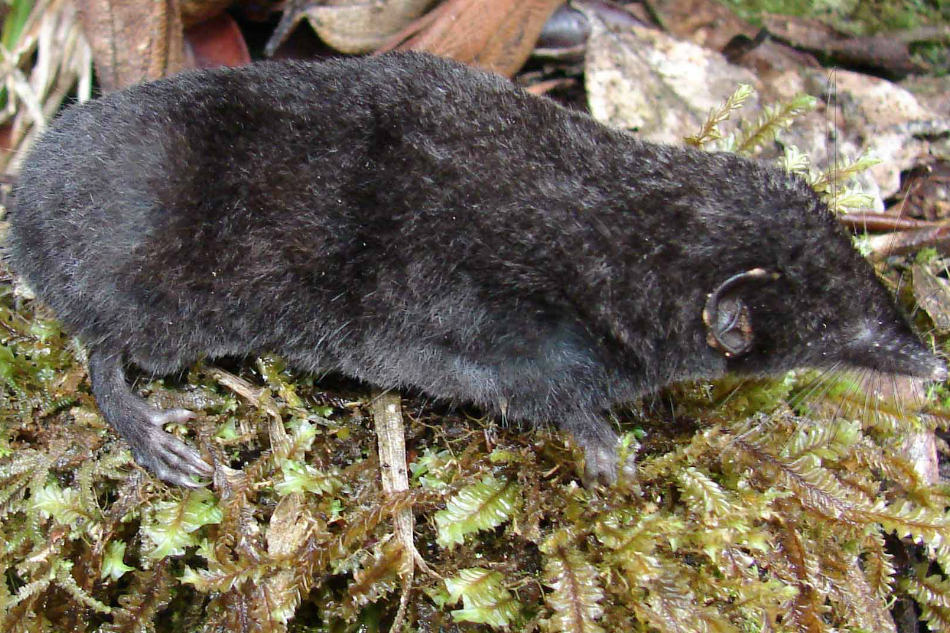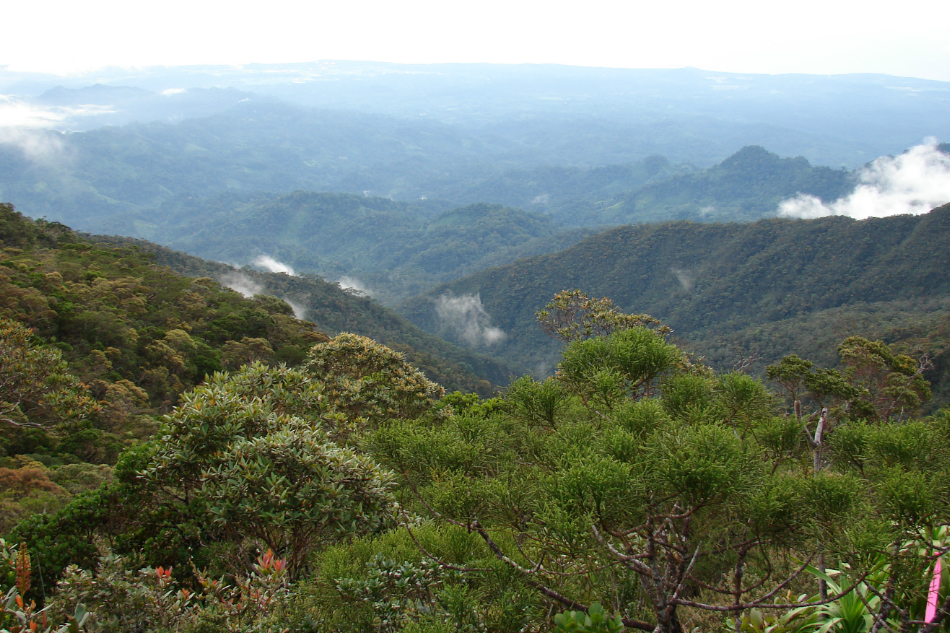New species of shrew discovered in Palawan's 'sky island' | ABS-CBN
ADVERTISEMENT

Welcome, Kapamilya! We use cookies to improve your browsing experience. Continuing to use this site means you agree to our use of cookies. Tell me more!
New species of shrew discovered in Palawan's 'sky island'
New species of shrew discovered in Palawan's 'sky island'
ABS-CBN News
Published May 09, 2018 04:50 PM PHT
MANILA -- Researchers have discovered a new species of shrew in a mountain in Palawan.
MANILA -- Researchers have discovered a new species of shrew in a mountain in Palawan.
The Palawan moss shrew, or Palawanosorex muscorum, was recently identified by a team of researchers, according to a Journal of Mammalogy paper.
The Palawan moss shrew, or Palawanosorex muscorum, was recently identified by a team of researchers, according to a Journal of Mammalogy paper.
The Palawan moss shrew, first spotted in 2007 by the late Danilo Balete, field survey leader and research associate at the Field Museum, has a slender, pointed snout and dark coat.
The Palawan moss shrew, first spotted in 2007 by the late Danilo Balete, field survey leader and research associate at the Field Museum, has a slender, pointed snout and dark coat.
Unlike other shrews, the Palawan moss shrew's tail is covered in dense fur instead of scales. It also has broad forefeet and long claws which it uses to dig for earthworms.
Unlike other shrews, the Palawan moss shrew's tail is covered in dense fur instead of scales. It also has broad forefeet and long claws which it uses to dig for earthworms.
ADVERTISEMENT
Rainer Hutterer, the paper’s lead author, analyzed these anatomical traits and determined that the Palawan moss shrew is a distinct species.
Rainer Hutterer, the paper’s lead author, analyzed these anatomical traits and determined that the Palawan moss shrew is a distinct species.
Larry Heaney, Negaunee curator of mammals at the Field Museum in Chicago, said the Philippines is a hotbed for mammalian biodiversity, and that the discovery of the shrew in Palawan did not exactly shock him and his team.
Larry Heaney, Negaunee curator of mammals at the Field Museum in Chicago, said the Philippines is a hotbed for mammalian biodiversity, and that the discovery of the shrew in Palawan did not exactly shock him and his team.
"In many ways, finding this species was exactly what we had expected," he said,
"In many ways, finding this species was exactly what we had expected," he said,
“It provides some clues about how small mammals have evolved and moved between Asia and Africa," co-author Jacob Esselstyn from the LSU Museum of Natural Science also said.
“It provides some clues about how small mammals have evolved and moved between Asia and Africa," co-author Jacob Esselstyn from the LSU Museum of Natural Science also said.
The Palawan moss shrew was found in Mt. Mantalingahan, a mountain in Palawan which is the habitat to three unique mammal species, including the shrew.
The Palawan moss shrew was found in Mt. Mantalingahan, a mountain in Palawan which is the habitat to three unique mammal species, including the shrew.
"There are entire countries that don’t have three unique mammal species. So for there to be three species on one mountain, on one island, in one country is really something,” Heaney said.
"There are entire countries that don’t have three unique mammal species. So for there to be three species on one mountain, on one island, in one country is really something,” Heaney said.
What makes Mt. Mantalingahan unique is that it can be considered a "sky island," or isolated mountaintops home to distinct habitats separate from the lowlands and neighboring mountains.
What makes Mt. Mantalingahan unique is that it can be considered a "sky island," or isolated mountaintops home to distinct habitats separate from the lowlands and neighboring mountains.
Sky islands like Mt. Mantalingahan create hubs of diversity, which allows for multiple ecosystems and a wider range of species to coexist within a single area.
Sky islands like Mt. Mantalingahan create hubs of diversity, which allows for multiple ecosystems and a wider range of species to coexist within a single area.
According to Heaney, these sky islands may help explain why mammalian biodiversity specifically thrives in the Philippines.
According to Heaney, these sky islands may help explain why mammalian biodiversity specifically thrives in the Philippines.
"There could be many new species on these high mountainous regions in the Philippines, but because they are so high, and hard to get to, knowledge of their existence is awfully limited," he says.
"There could be many new species on these high mountainous regions in the Philippines, but because they are so high, and hard to get to, knowledge of their existence is awfully limited," he says.
Aside from scientific and research purposes, protecting the Palawan moss shrew and Mt. Mantalingahan can also provide personal and economic benefits to the residents of Palawan.
Aside from scientific and research purposes, protecting the Palawan moss shrew and Mt. Mantalingahan can also provide personal and economic benefits to the residents of Palawan.
Mt. Mantalingahan is also a crucial watershed which regulates the flow of water in Palawan through natural processes.
Mt. Mantalingahan is also a crucial watershed which regulates the flow of water in Palawan through natural processes.
The low-density, mountainous soil, humus, acts like a sponge and holds water from the frequent rainfall in high-elevation places.
The low-density, mountainous soil, humus, acts like a sponge and holds water from the frequent rainfall in high-elevation places.
"That’s where most of the water comes from that people in the lowlands depend on,” Heaney warns.
"That’s where most of the water comes from that people in the lowlands depend on,” Heaney warns.
“In deforested areas, when a typhoon hits, it kills thousands of people and animals, and destroys buildings. And if water isn’t being released slowly from the mountains, you’ll have less of it in the dry season, causing drought. If you want to protect your watersheds, you’ve got to protect your habitats," he added.
“In deforested areas, when a typhoon hits, it kills thousands of people and animals, and destroys buildings. And if water isn’t being released slowly from the mountains, you’ll have less of it in the dry season, causing drought. If you want to protect your watersheds, you’ve got to protect your habitats," he added.
Built on agriculture, fishing, and tourism, Palawan’s economy depends greatly on the steady flow of water.
Built on agriculture, fishing, and tourism, Palawan’s economy depends greatly on the steady flow of water.
Today, much of the Palawan moss shrew’s habitat remains undisturbed by human activity.
Today, much of the Palawan moss shrew’s habitat remains undisturbed by human activity.
“Sometimes it’s presented that environmental concerns and economic development are at odds with each other. That’s false,” Heaney said.
“Sometimes it’s presented that environmental concerns and economic development are at odds with each other. That’s false,” Heaney said.
“Smart economic development means not creating situations that cause mass damage as a result," he added.
“Smart economic development means not creating situations that cause mass damage as a result," he added.
Beyond the economic implications of the shrew’s discovery, Heaney said he hopes the new species sparks excitement among the Filipino and international scientific communities, which in turn can help encourage research, conservation, and advocacy efforts.
Beyond the economic implications of the shrew’s discovery, Heaney said he hopes the new species sparks excitement among the Filipino and international scientific communities, which in turn can help encourage research, conservation, and advocacy efforts.
“People in the world get excited about the cool things that live in their country,” Heaney said.
“People in the world get excited about the cool things that live in their country,” Heaney said.
“The fact that the Philippines is such a unique hotspot for mammalian diversity is something people should be aware of, something that people can take pride in," he added.
“The fact that the Philippines is such a unique hotspot for mammalian diversity is something people should be aware of, something that people can take pride in," he added.
ADVERTISEMENT
ADVERTISEMENT




